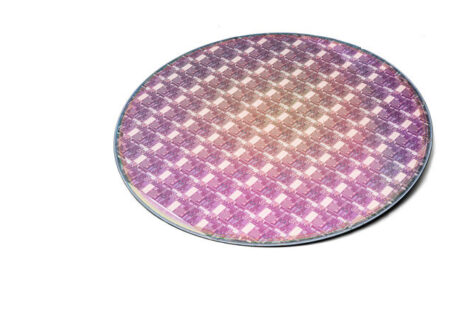The application of a dual dispenser is useful in optimizing cycle times. Schiller has eliminated the offset problem between the dispenser needles that is associated with such dispensers.
Torsten Schulz, Sieghard Schiller GmbH & Co. KG
The common problem in conventional dual-dispenser design is the potential offset between the original needle positions. When dispensing is required along a very narrow path at the edge of a component, the metering needle and the component may come into contact with one another, due to positioning and component tolerances. This contact can result in an offset between the actual and desired positions of the tip of the metering needle. This is a significant disadvantage, particularly in the case of small parts that require a high degree of dispensing accuracy and have complicated or symmetrical shapes, respectively. Standard machines are often impossible to design as dual dispensers; consequently, the dispensing time is twice as high. Unless the user invests in an additional machine, this reduces throughput and earnings heavily.
The Schiller solution eliminates the offset problem in an elegant way in which the needles are oriented in the dual dispenser. Both needles are located on the basic XY-system, one on an additional X-axis for fine correction, the other needle on an additional Y-axis for independent fine-tuning. The flexible XY-gantry robot with mounting plate easily meets the required repeat tolerances in XY-directions of ±20µm. To increase flexibility further, each of the cartridges are mounted on their own Z-axis with a repeat accuracy of ±10µm.
In combination with the XYZ-needle control module, the exact offset of each needle can now be determined in X, Y and Z directions, and taken into account in the dispensing programs via the additional needle axis. This allows any off-set between the needle tips to be corrected, and optimizes process reliability while at the same time cutting the cycle time in half, compared to a single dispenser. The system also makes it possible to dispense three-dimensional geometries with simultaneous offset correction, something that conventional dispensers can’t provide. Nevertheless, we have this machine designed around our standard robot cell.
Variety of modules
This system can accommodate components of nearly any shape. Numerous modules are avail-able, such as various versions of conveyor belts and feeder bars with corresponding centering stations for receiving the components. Magazine handling systems used as sending and receiving stations are available, as is the option of integrating them into a line. Conveyor belts can be equipped with frequency-controlled drives to prevent vibration. These drives allow the speed to be reduced before a workpiece holder is brought into position at a stopper.
The dispensers eliminate inaccuracies in the metering process itself. A processor-controlled pneumatic module, consisting of valves, compensation chamber and pressure-sensor, monitors parameters such as pressure levels and temperature. As a result, variable control of the metering process is possible. An integrated scale feature is used to verify the metered amount of dispensed material, set to automatically performed intervals during operation, or can also be performed manually. The dispensers are using 10cm³ cartridges and time-pressure mechanisms; however, we can al-so accommodate customer-specific requirements here. With an optional imaging system, locations can by verified for completeness and proper execution. This type of process control can be operated in combination with a marking laser or aninker. The machine is controlled via an NT-based user interface.
Four main benefits
In a nut shell, the system offers four main advantages: cost savings by cutting cycle times in half; improved quality through elimination of needle offset and the use of a metering system incorporating sensors and controls to monitor parameters, and cost savings by using standard hardware and software modules to offer a reliable system that is easy to operate.
ZUSAMMENFASSUNG
Beim Dispensen von flüssigen oder pastösen Materialien lässt sich mit Doppel-Dispensern der Durchsatz praktisch verdoppeln. Störend dabei ist allerdings der Versatz (Offset) zwischen beiden Nadelspitzen. Mit einer speziellen Konstruktion, die beide Nadeln auf zusätzlichen, leicht korrigierbaren eigenen Achsen bewegt, lässt sich dies zuverlässig erreichen.
RÉSUMÉ
L’utilisation de dispensateurs doubles de produits liquides ou pâteux permet de doubler pratiquement le rendement. Le décalage (offset) entre les deux aiguilles est cependant gênant. Ceci peut être évité de manière fiable à l’aide d’une réalisation spéciale, qui fait déplacer les deux aiguilles sur des axes supplémentaires, légèrement corrigés.
SOMMARIO
Per la distribuzione di materiali liquidi o pastosi è praticamente possibile raddoppiare le portate con l’impiego di dispenser doppi. Qui lo sfalsamento (offset) tra le due punte degli aghi costituisce però un fattore negativo. Tramite una speciale costruzione, che muove i due aghi su degli assi supplementari propri e facilmente correggibili, è possibile prevenire con affidabilità quest’inconveniente.
Share:










